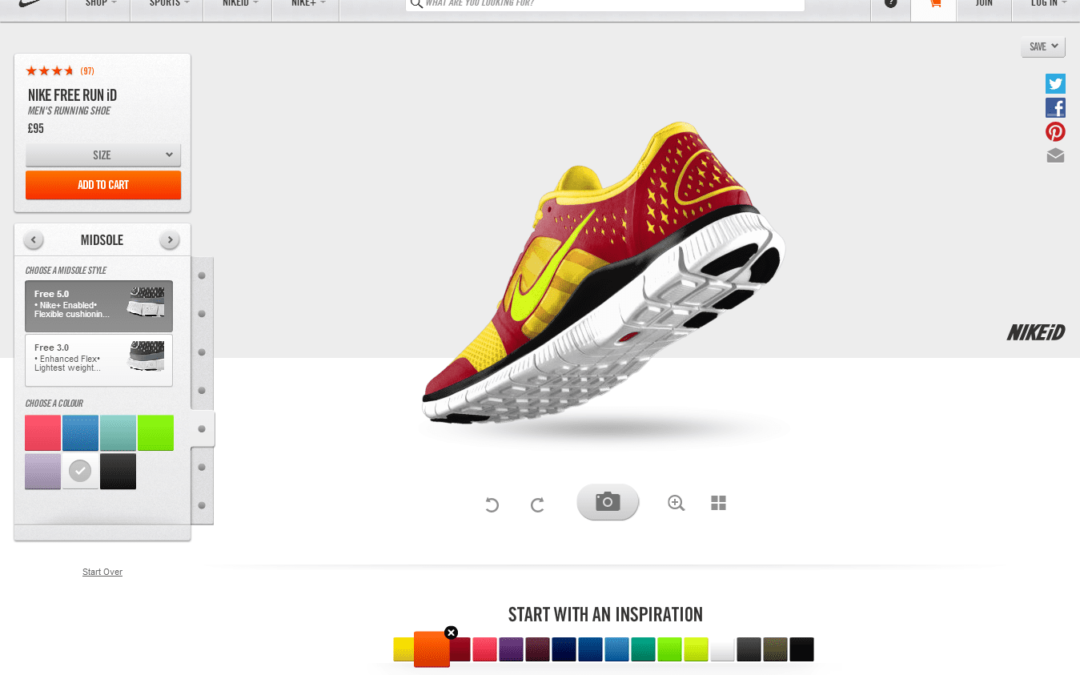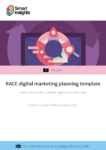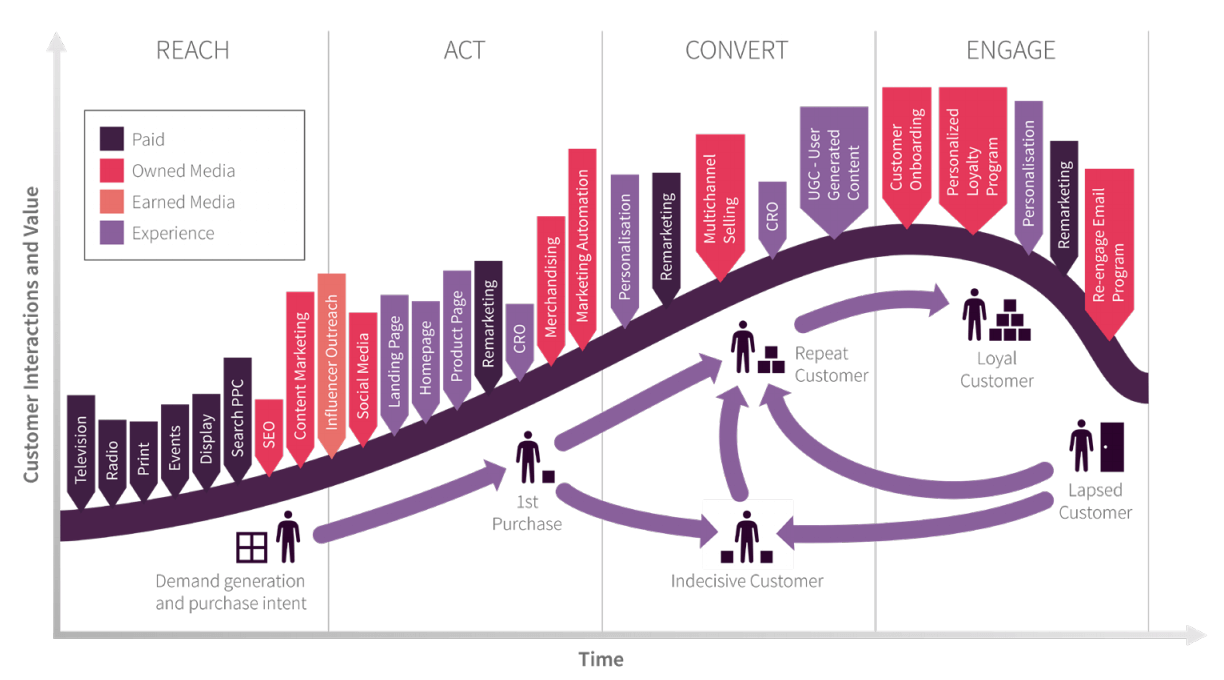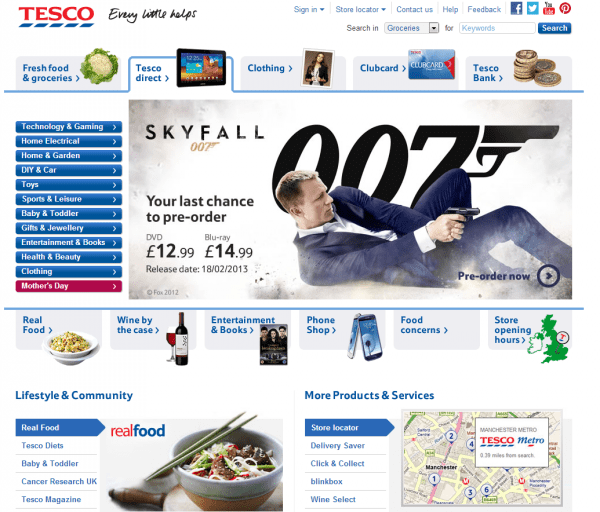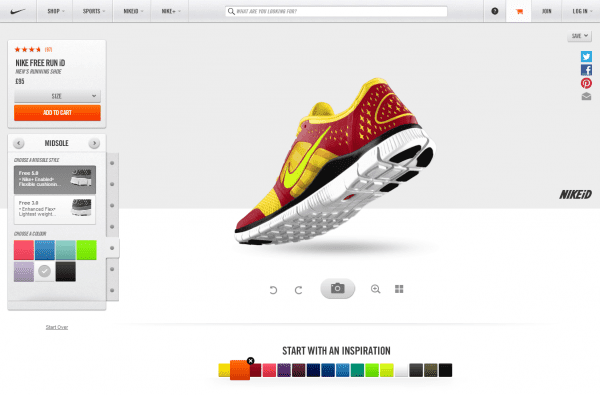Updating approaches to your online branding for the digital world
Brand is No.1
I want to start with a bold statement. The online brand is the single most important element to a business or organization. If you think about what online branding actually is; a position that has been carefully established, and a set of customer promises and overall experiences based on communication and service, then not delivering on these promises and what a brand stands for will lead to failure.
In today’s digital landscape, strong online branding will allow you a closer connection with your prospective customers, leading to conversion and retention.
Without a strong online brand, a business will experience reduced competitiveness, inaccessible products and services, customer confusion, and dissatisfaction. As your online brand shows its form in all your customer touchpoints, then to say it is everything is really not an overstatement.
What is online branding?
Website(s), search marketing, mobile content, social media, rich media, e-commerce, email marketing and more go into making an online brand identity today.
If you’re looking for marketing solutions to take your brand online or accelerate your existing digital ROI, you’re in the right place. Our marketing tools and templates help you build a winning marketing strategy that supports your business objectives and boosts your brand’s revenue.
What’s more, all our marketing strategy resources are integrated across our RACE Framework. So you can be confident that your strategic planning and channel tactics drive the results you need to reach your goals. Download your free digital marketing plan template to find how your brand could benefit from using RACE.
Introducing the RACE Framework for brands
Savvy online branding marketers already know that keeping your customers’ experiences at the center of your strategy is crucial for brand awareness, conversion, and loyalty. Where our popular RACE Framework comes into its own is the ability to streamline and plan marketing activities around your customers’ omnichannel journey.
Integrated across a 5-step lifecycle of plan-reach-act-convert-engage, our tried and tested structure empowers branding marketeers to plan, manage, and optimize their marketing strategies.
Digital-centric approach to branding
In this article, I aim to break down the major elements that make up a typical brand proposition and describe in context to each, how online considerations and experiences need to be central to how the brand delivers its promises.
Key Online Branding Factors
1. Customer
In a branding process it all starts with the customer; considering a multitude of factors from age to gender to disposable income, through to their estimated frequency of purchase. Both an opportunity and a challenge, the online brand must identify, how through digital, they can raise awareness via the channels these customers frequent and engage with.
The demographics will have a digital footprint, more often than not multi–channelled. It is vital to determine what these customers will search for, what devices they will be using and when and which social networks, websites and apps they engage with, how often, and when.
Don’t forget offline experiences too. For example, in retail, a customer can pick up the phone to get a location and opening hours, drive and park to the location, walk into a store or warehouse, use a ramp or lift (if they cater for disabilities), get help from staff, find their way to what they need, find a product within the price range to meet their expectations, access the checkout, purchase effectively and leave safely and securely. You may also be able to easily enquire, return items, and receive postal or telephone communications.
2. Brand identity
For some, this is their understanding of where brand identity starts and finishes. A logo is a visual marker for a brand. Of course, we know there is much more, but it is true that it is what instantly connects customers with brands. It can create interest, curiosity, affinity, and connections.
Over time it becomes an engrained image to represent your consumer experience. An identity that delivers an emotion or a state of mind based on your perception, or positive or negative experience you may have had.
A hugely important factor to consider when it comes to identity is naming. In Digital Marketing this impacts most on search.
Knowing the name is one thing, but if it is difficult to spell or remember, it can be as disastrous as having an underground store only accessible via a top-secret road.
Also, more often than not the identity forms the URL, users will of course search for this too if they have heard of you offline. This makes your brand name choice, one in which it should also be memorable and of course if it contains the keywords your potential customers will use, then it will aid SEO as the URL string is an important ranking factor.
Another key factor is how the identity stands out in a multi-platform crowded experience. Our bookmarks, tab favicons on our web pages, web apps on our browser, image results for search, and also our mobile app icons should make everyone think about how the identity performs and connects on each platform. Importantly we must now consider how it has the flexibility to be changed to “retrofit” these locations and still be easily recognizable.
Facebook is a great example of how its distinctive “Blue F” and like “thumbs up” icon works well alongside or in isolation from the Facebook logo making it perfect for a multi-platform approach.
3. Competitors
Competitor analysis is a key part of the brand process in order to differentiate image, messaging, and approach. Digital channels and their transparency allow this analysis to be done more thoroughly than ever before. From searching online, to sampling apps, to experiencing website UX and subscribing to their emails, competitor analysis is more open and accessible than ever before.
More than ever before, insight can be gained to learn what they offer, how they communicate, what the experience is like and where they focus customer and product attention online.
This competitor analysis can provide key insight into such factors as:
- The social networks they should occupy and focus on
- The competitiveness for key search terms among competitors
- The content strategy employed to deliver more relevance
- Online Value Propositions, a business can commit to that better or are different from those of the competition.
- Identifying a strategic and unique gap a business can occupy and begin to monopolize based on a customer-benefiting digital application
All brands have to be aware that they are being watched, monitored and ultimately driving a competitor response based on the transparency of the digital world. Prices are being matched, tweets are being scanned, and websites are being trawled through. But brands can compete, with the right resources and tactics.
4. Online Messaging
Messaging is a key part of the online branding process. Key messages to support the product, service, or customer value add weight to identity and enable consumers to “get it” in a few seconds.
Best practice in terms of brand messaging and then delivering online can be viewed amongst a large number of brands but two personal favourites would be Tesco and Sky.
Tesco’s key ‘brand driver’ is simple; “Every Little Helps”. This means different things to different people, but Tesco strives through digital, to make shopping easier, more helpful, personalized, and more rewarding through its content, features, rewards, mobile apps, personalized offers, and multi-channel shopping experiences. It is a true lifestyle brand with digital solutions right at the heart of its brand promise. “Every Little Helps”, suits perfectly.
Sky’s key message is “Believe in Better”. To me, this key message suggests confidence, motivation, and a commitment to be the best. Sky, the home entertainment and connectivity provider, has best-in-class solutions and the user experience it always seems is largely ahead of its competitors. Sky online products just feel right. They are easy to use, accessible, quick, and consistent. I believe their products and user interface are “better” and I also have noticed occasions where their belief in being better has led to them being first for key innovations such as their “Sky Go” app.
Beyond the top-level brand messages, digital must deliver the same tone of voice, consistent levels of information, and an ongoing narrative with its audiences throughout the hierarchies of messaging to support the brand.
5. Location
When developing a brand project, location is a key factor. Where will the business be based, where do customers live, what languages do they speak and where do they demand orders to, or where will a business receive them from? These are some of the key questions worth answering.
With online, location becomes even more important because the business is not in total control of its audience and its location. You may be an SME serving a local community but tourism, social media awareness, search factors, and increasingly multicultural audiences can drive change to this potential customer base. A change may be required from a once in a one size fits all approach to content and the products and services on offer.
A key element to online branding with regards to location is the fact that if a business is selling online across various countries then it MUST invest in a commitment to at least consider the impact of language, culture – centric online advertising and importantly also be able to deliver on shipping timelines which customers expect.
The best International brands have a unique but ‘brand true’ strategy for each location, from the search engines to optimize for, to mobile usage and choice of operating systems to develop apps for, location of the products and services and the respective customers are crucial aspects of successful, international online branding.
Location as part of brand awareness and engagement has also become much more of a factor with the use of smartphones. Location-based apps to help customers on the go find a business, buy using their mobile, share their check-in and experience are adding value to the brand. A great example of a brand investing successfully in digital brand strategies per location is Starbucks. Global sites and unique desktop and mobile experiences per country ensure that they remain the pinnacle consumer coffee brand. Read More about Starbucks’ digitally aligned strategy here.
Looking for new solutions to integrate and optimize your brand strategy? Our dedicated marketing training and tools are proven to drive growth, by focusing on using customer data to inform your marketing activities. Get started as a Free Member today.
6. Product
Digital media, its consumption, various formats, and interactivity have given brands exciting opportunities to show, sell, share and deliver their products online. In branding processes, products are considered in terms of their key messaging and top-level display in line with the brand image and positioning of the company. If a brand is positioned as having unique or ‘competitor busting’ attributes then what digital media allows us the opportunity to show this like never before with features such as:
- Video content
- Interactive personalization tools
- Sharing facilities via social media
- Try this on features
- Augmented reality via mobile
- Real-time configuration based on user inputs
Brands must decide on the right mix of tactics to use, based on the product’s brand position to fulfill and exceed customer expectations, differentiate the products from their competitors, and aid conversion.
A great personalized online brand product experience comes courtesy of Nike. Nike ID allows you to use their website to personalize your apparel with color and messaging. This fits Nike’s highly personalized and user-connected brand experience which offers personal and complementary products such as Nike + and Nike Fuel.
7. People
How people in an organization understand and deliver the brand promises is central to making the brand work. How they look, talk, write and their nature and approach are all part of the brand delivery process. This often takes time to educate, train, monitor, and recruit the right people.
Online, people still remain an important element to the brand on a number of levels. Customers may seek comfort online by seeing, hearing, and reading about key members of the management or customer service team. Customers may wish to check the history and credibility of the management team or find out more about a person they met to ‘suss them out’ further.
People are responsible for online brand delivery because a digital communications strategy is nothing without content. When it comes to delivering this content, businesses must ask these people-related questions:
- Do I have the resource to communicate online, how do my brand position and customer base dictate?
- Does my online content style match my messaging and tone of voice?
- What channels do I use to enable efficient customer service?
- If I have a team of content writers online how do I ensure consistency?
- Will my staff’s personal and business-related online activity strengthen or harm my brand?
Contextual summary
Online branding relies on digital marketing for all aspects of planning, managing, and evaluating the customer experience. By taking into account the key factors mentioned in this article and ensuring there is a strategy that considers the right digital mix in support of the brand position, businesses can strengthen their online position in the marketplace and thrive in the digital world.

